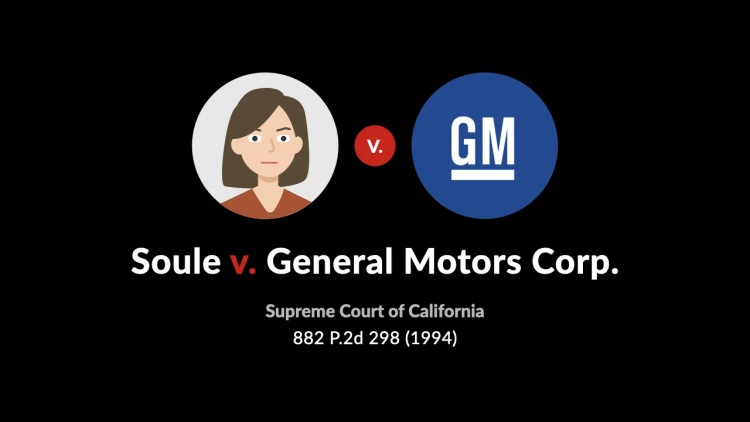Soule v. General Motors Corp.
California Supreme Court
882 P.2d 298 (1994)
- Written by Craig Conway, LLM
Facts
Terri Soule (plaintiff) was driving her Camaro when another vehicle struck near the Camaro’s front driver-side wheel. The wheel collapsed rearward and smashed the floorboard into Soule’s feet. Soule sustained permanent ankle injuries. Soule sued the Camaro’s manufacturer, General Motors Corporation (GM) (defendant), alleging that the Camaro’s defective design allowed the wheel to break free and move rearward. GM argued that the design was not defective and that the sheer force of the collision itself caused Soule’s injuries. At trial, each side presented numerous experts in specialized fields. The jury was instructed that a product’s design is defective if the product fails to perform as safely as an ordinary consumer would expect or if the design’s inherent risk of danger outweighs its benefits. The jury found for Soule and awarded $1.65 million in damages. GM appealed, arguing that because the product was complex, the trial court erred in instructing the jury that defectiveness could be based on a failure to meet ordinary consumer expectations. The court of appeals affirmed the jury’s verdict. GM appealed.
Rule of Law
Issue
Holding and Reasoning (Baxter, J.)
What to do next…
Here's why 899,000 law students have relied on our case briefs:
- Written by law professors and practitioners, not other law students. 47,000 briefs, keyed to 994 casebooks. Top-notch customer support.
- The right amount of information, includes the facts, issues, rule of law, holding and reasoning, and any concurrences and dissents.
- Access in your classes, works on your mobile and tablet. Massive library of related video lessons and high quality multiple-choice questions.
- Easy to use, uniform format for every case brief. Written in plain English, not in legalese. Our briefs summarize and simplify; they don’t just repeat the court’s language.






